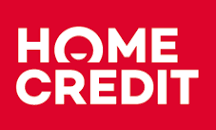Các phòng ban đang tuyển dụng tại Home Credit Việt Nam
Ngân hàng
Buôn bán/ Kinh doanh
Tư vấn
Tài chính - Kế toán
Hành chính
Dịch vụ khách hàng
Nhân sự
Other
Pháp lý
Marketing/ Truyền thông


 Tweet
Tweet
 Facebook
Facebook
 Copy Link
Copy Link